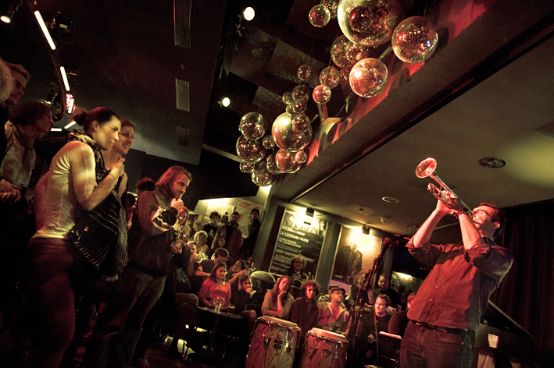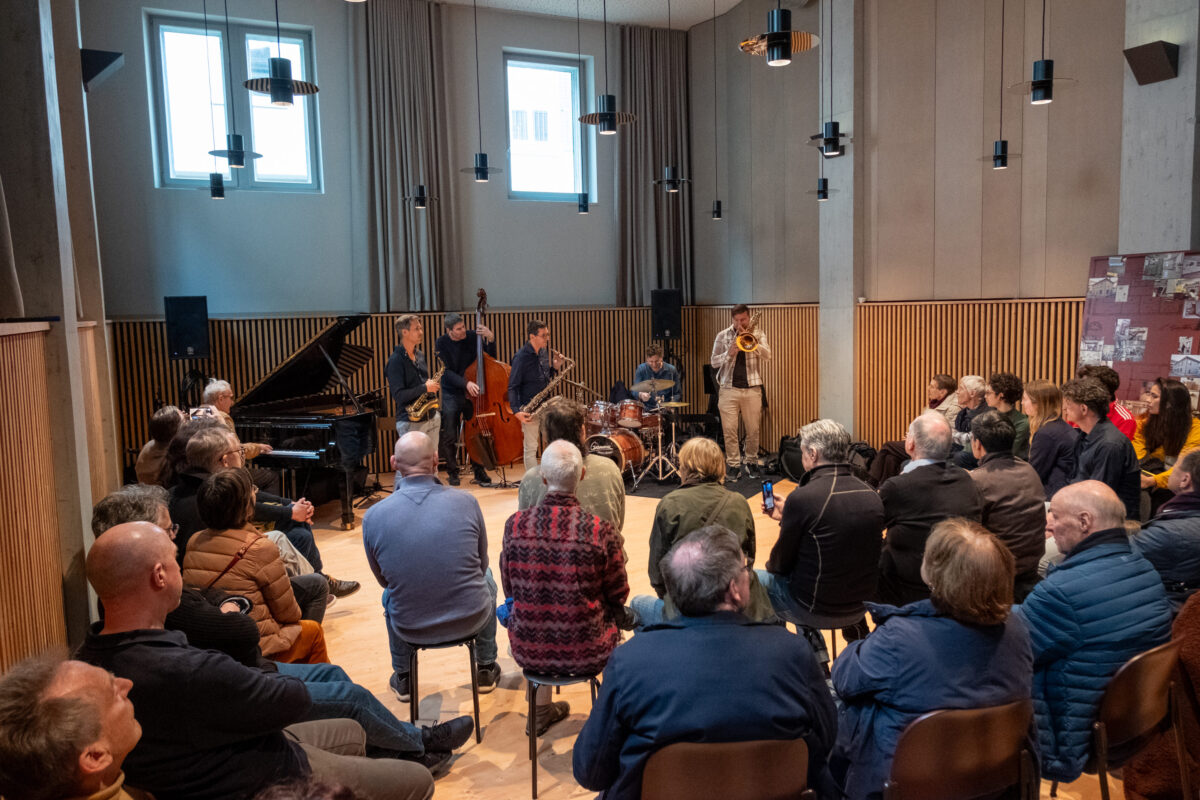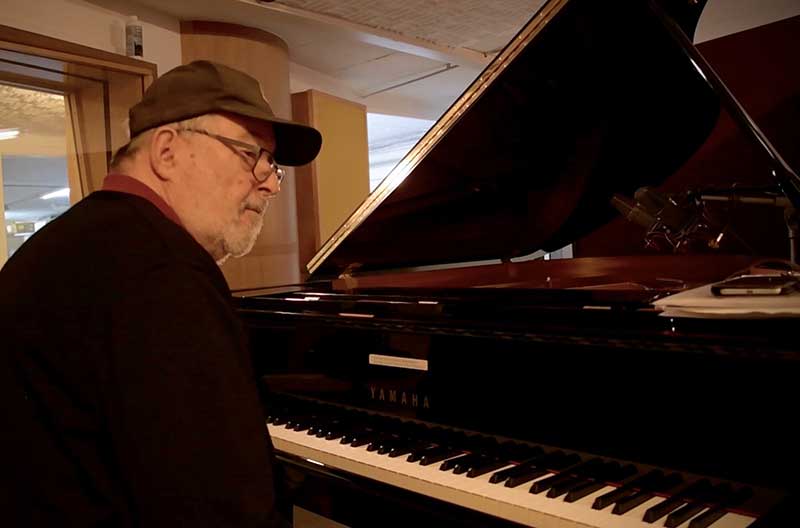In the beginning was the cheese
Zurich's JazzBaragge has been serving up its weekly live sessions for sixteen years. Now it is presenting itself to the whole world with a new face.

Every Wednesday evening, the auditorium of the Moods jazz club in Zurich disappears behind a black curtain. A carpet is rolled out in front of it and the instruments are placed on it, leading through the program like a red thread: Piano (occasionally guitar), double bass and drums. The mood of a room is the most important prerequisite for a well-tempered jam session. And here, supported by a well-stocked bar, it is without a doubt just right. The room feels intimate enough to give you the feeling of being among friends. But it's also big enough for an audience whose applause doesn't sound like a plucked chicken: "When we have 150 people, we're packed," says Dave Feusi, a co-founder and president of JazzBaragge: "And last week we had that."
The live session organized by the JazzBaragge association has been at home at Moods since February 2016. Now they feel comfortable enough to present themselves to the world. Thanks to an elegant new homepage, the Journey to JazzBaragge only as long as a mouse click. Entry is free of charge. Each session is streamed live in full length and parts of it are archived. There's no need to worry that jazz fans will prefer to sit at home in future and watch the evening on their computers. Thanks to the first-class picture and sound quality, you get the impression that a lot of good things are happening here. But you also sense that this good would be much better if you were there yourself. "It's like getting records of experimental music," says board member Nicole Johänntgen: "It's a teaser. You know that you have to be there live to really experience the music."
In search of the right club
After a false start in 1999, Dave Feusi and Peewee Windmüller came across the Chäsbaragge in Brunau. Fondue was served here from Thursday to Sunday, and the store was empty for the rest of the week. The location was ideal for the idealistic plans of the two initiators, and so they founded the "JazzBaragge" in January 2001. In the beginning, they programmed bands on Monday and Tuesday and invited musicians to a jam session on Wednesday. The bands didn't take off. So the jam remained. It lasted just under a year in the steaming cheese bell. Then the money ran out here too.
In the search for new synergies, the Zurich Jazz School came onto the scene. It ran its own club at Waldmannstrasse 12, and JazzBaragge also took up residence here. The connection lasted for fourteen years - until the jazz school moved to the Zurich University of the Arts (ZHdK) in the Toni-Areal. The attempt to relocate JazzBaragge to the new Mehrspur music club at ZHdK failed: "The new club already looked big and cold on the plans," says Feusi. "You can't have a jam in front of 500 people." That's when the welcome invitation from Moods arrived. "It was very important to us that nobody was interested in making money," says Feusi. "It's all about bringing musicians together and giving young people the opportunity to make contacts and learn their trade."
The sound goes around the world
The renovation period at Moods was ideal for JazzBaragge to acclimatize. There was a spirit of optimism all around, and it was fitting that Wednesday evening first had to get used to the new surroundings. Thanks to the new audiovisual possibilities of Moods, completely new perspectives opened up. However, this is not the first time that the jam sessions have been streamed live. Ten years earlier, the Digital Broadcast Channel (DBC-TV), which was launched in France and continued in Engelberg, had already set up cameras in the JazzBaragge. And because the company founder was a big fan of the alternative gaming world Second Life, the session even had its permanent digital home there. Of course, the image and sound quality at Moods is much better today. "We had to try things out first," says Feusi. "We soon realized that there were too many microphones and cameras around. They disturbed the audience and distracted the musicians. Now there are just two overheads, plus the Sennheiser head and mics for bass and piano, sometimes guitar. That works well. It gives an authentic sound. You can hear everything, but it's not a studio recording." So the sound of JazzBaragge is now traveling around the world again. For the time being, however, the goals are not yet so ambitious. "We're still concentrating on Switzerland," explains Johänntgen. "Our aim is to promote exchanges between musicians and perhaps encourage them to set up similar sessions. That's already enough work. But musicians from Germany, France and other countries already sometimes appear. Last week there was one from Palermo who had already heard of us."
The technology is brand new, the concept has remained unchanged for sixteen years. A basic trio plays a set that lasts 30 to 45 minutes. Then the session opens. Everyone can join in. "Everyone has to see for themselves what they are capable of," says Feusi. To keep the dynamic fresh, the core trio, which is also put together especially for this event, is changed every two weeks: "Nothing should become a habit," explains Feusi, "otherwise the session is dead."








